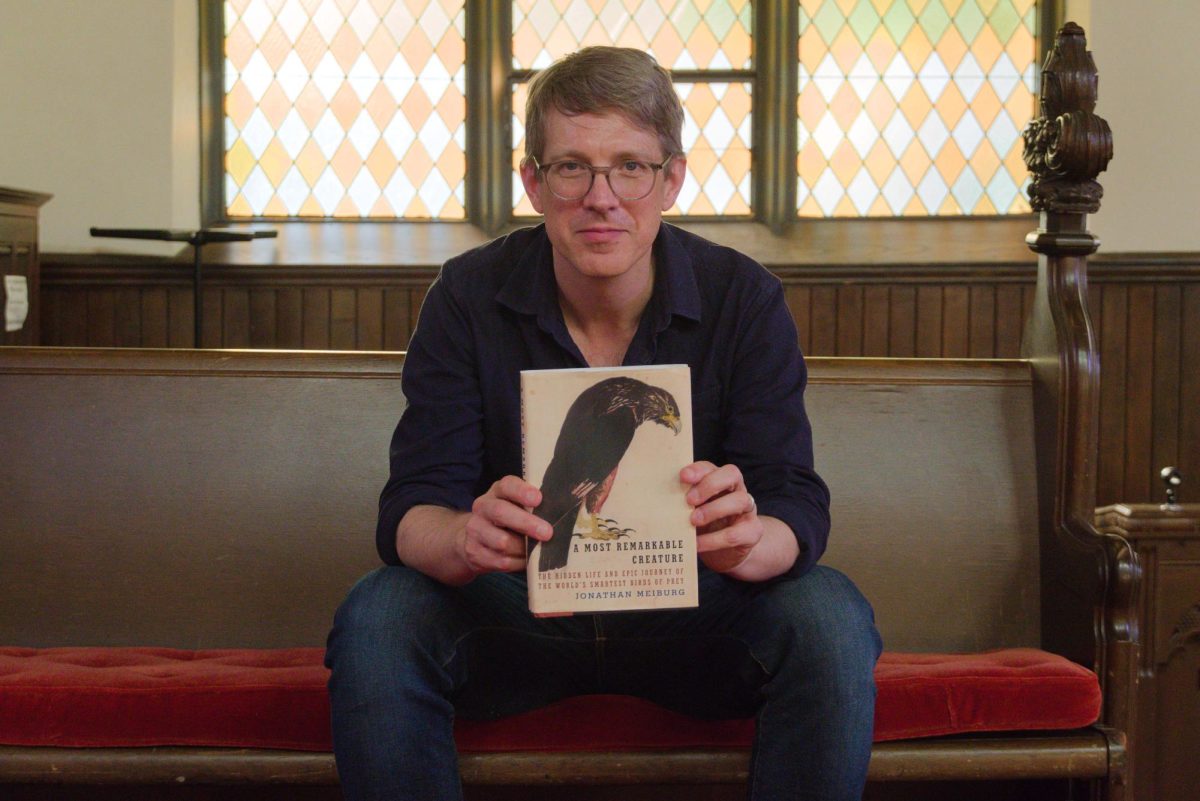Grinnell College has campus security, New York City has the NYPD, but the Hopi people of Northeast Arizona have a law-enforcement system that you would never dare to mess with—clowns.
On Tuesday afternoon, around 30 college faculty, staff, students and community members gathered to hear Professor Louis A. Hieb ’61 give a talk entitled “The Judgment of Laughter: The Hopi Clown,” about the role of clowns in Hopi culture. The lecture was sponsored in memory of the late Ralph Luebben, who was Grinnell’s first ever Professor of Anthropology.
It would probably be good to clarify that Hopi clowns aren’t so much a physical police force as they are a moral police force—calling out negative community behaviors during the annual Katsuna ceremony. They are thus tied to Hopi religion, which sees the year as divided at the solstices into two halves—the period following summer solstice marked by the coming of the Katsunas.
Katsunas (pronounced—and often spelled—“kachina”) are good spirits that, according to Hieb, are essentially “the embodiment of the Hopi way.” Katsunas, then, are the ideal Hopi role model, and clowns, or “tsuku,” are the exact opposite, since “the clowns depict life as it should not be.” Of the two main types of tsuku—there are about 12—one resembles the stereotypical western clown—a large grimacing smile painted on its face with dust—while the other tsuku looks like a cross between a zebra and a teletubby, with hair antennae and black and white striped garments.
The Katsuna ceremony has multiple elements and is loaded with symbolism, but the basic role of the tsuku are to usurp the performance plaza form the Katsinas and perform a variety of skits that Hieb described as “farcical morality plays that reflect current conflicts in Hopi society.”
Topics range from language usage—the ceremony is performed in the Hopi language, except when English and other languages are relevant to a topic—to gender roles, to traditional meal preparation, and sometimes target individuals in the community, their names pinned to a clown’s back. “There are some very personal and very pointed things addressed by the clowns,” Hieb said, citing the example of a skit that critiqued a man for cheating on his wife.
While the clowns used to deal mainly with conflicts and issues within the Hopi community, the ceremony has been adapted to address more modern questions. “Today the concern seems to be more with external boundaries—maintaining Hopi identity in the face of an increasingly dominant culture,” Hieb said.
The Hopi do not have an official police force. Rather, as the title of Hieb’s talk suggests, behavioral standards are maintained in part by threat of public humiliation—the laughter of the community standing in for the judgment of the court. Hieb suggests that laughter has potential in some ways to be more effective than law. “I would never want to be hauled down to the plaza,” Hieb said.
Many are not used to seeing clowns play such a serious role. “It’s interesting how it’s a means of social control,” said Becky Lyons ’10, who attended the talk. “It’s different from what I think of when I think of clowns.”
What seems different, however, is actually not so far off. Hieb notes that average circus clowns also critique human behavior, in a more common-sensical way, citing slipping on banana peels as the original behavioral counterexample.
The Hopi concept of clown as societal critic led listeners to consider the similar role humor plays in mainstream American society. “It’s kind of like an SNL skit in a way,” Lyons said.
Hieb, too, pointed out the Hopi-esque clowns hiding like joy buzzers in mainstream media. “People like Jay Leno and Johnny Carson are clowns dealing with much more secular humor,” Hieb said.
Turns out, that while clowns reveal actions that are deviant and unnatural within their society, there is nothing that comes more naturally to society than clowning. “Nearly all Native American societies had clowns or humor figures in some sense,” Hieb said. “Clowning is truly a nearly universal phenomenon.”



















































Ken • Jul 28, 2012 at 7:11 pm
Katsina (Hopi spelling), Kachina (popular English spelling) has never been spelled “Katsuna.” Where in the world did you get that? Somebody has a tin ear.
Roger • Sep 11, 2011 at 1:01 pm
“The Hopi do not have an official police force.”
A ridiculously false statement. What happened to research and editing?
Steve Mann • Sep 16, 2010 at 10:20 am
Great article, but if Professor Hieb ever tries drinking a Budweiser in public in Hopiland he will surely discover the sobering reality of the very official Hopi Police Force.